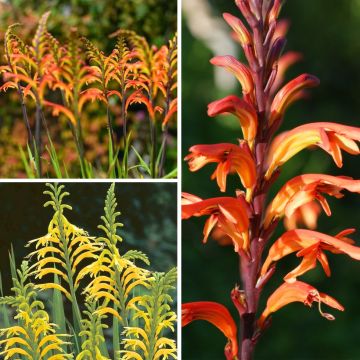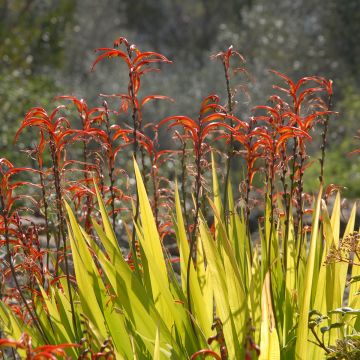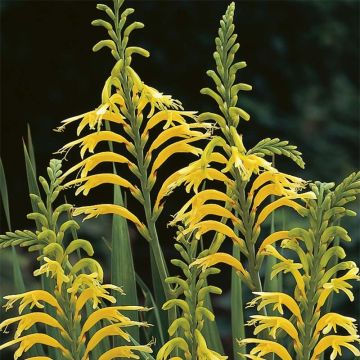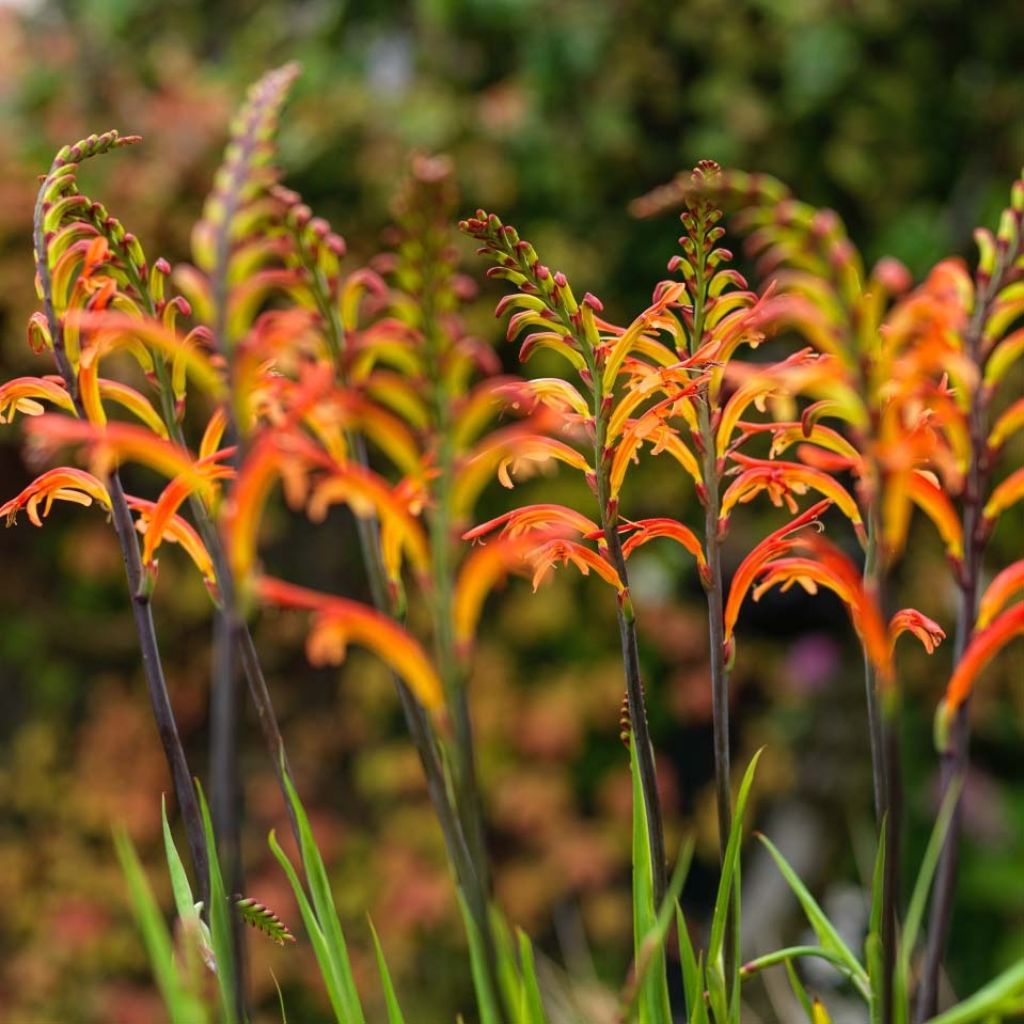

Chasmanthe floribunda Saturnus
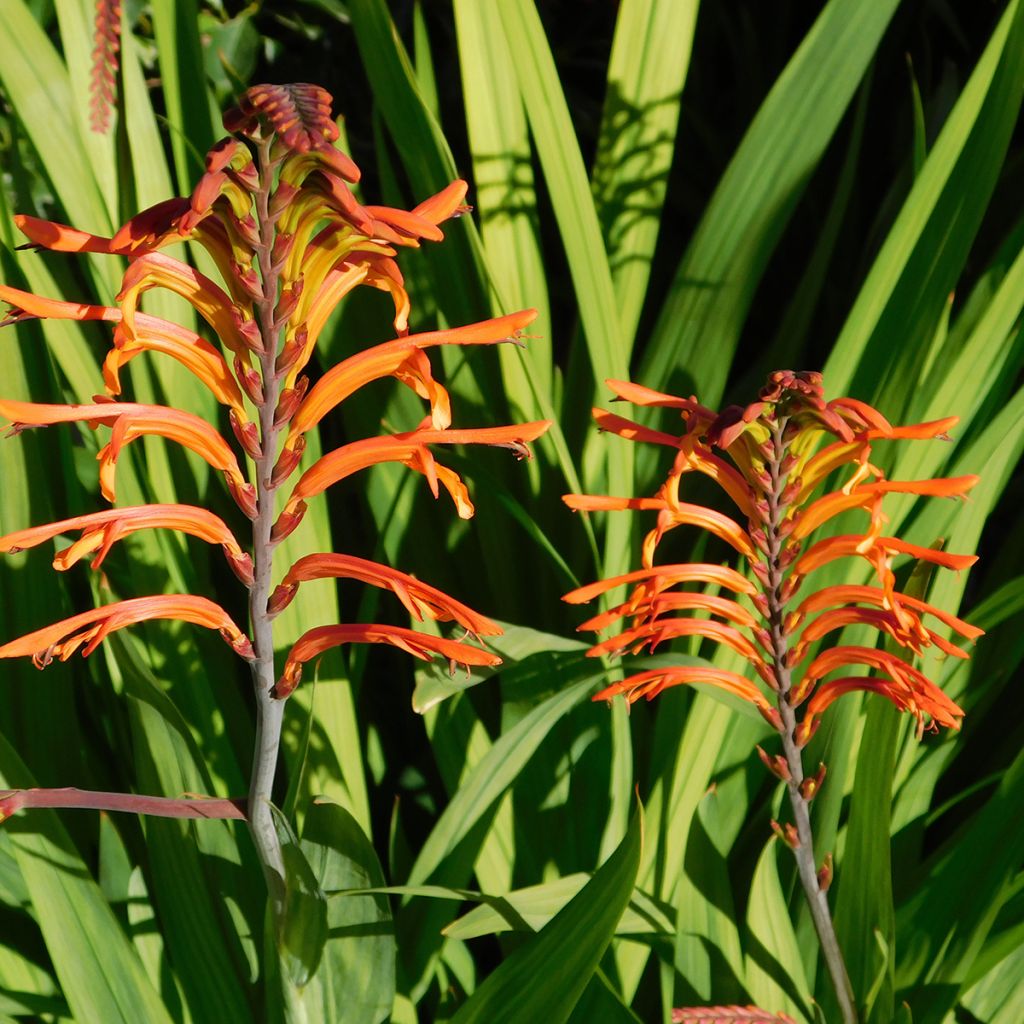

Chasmanthe floribunda Saturnus
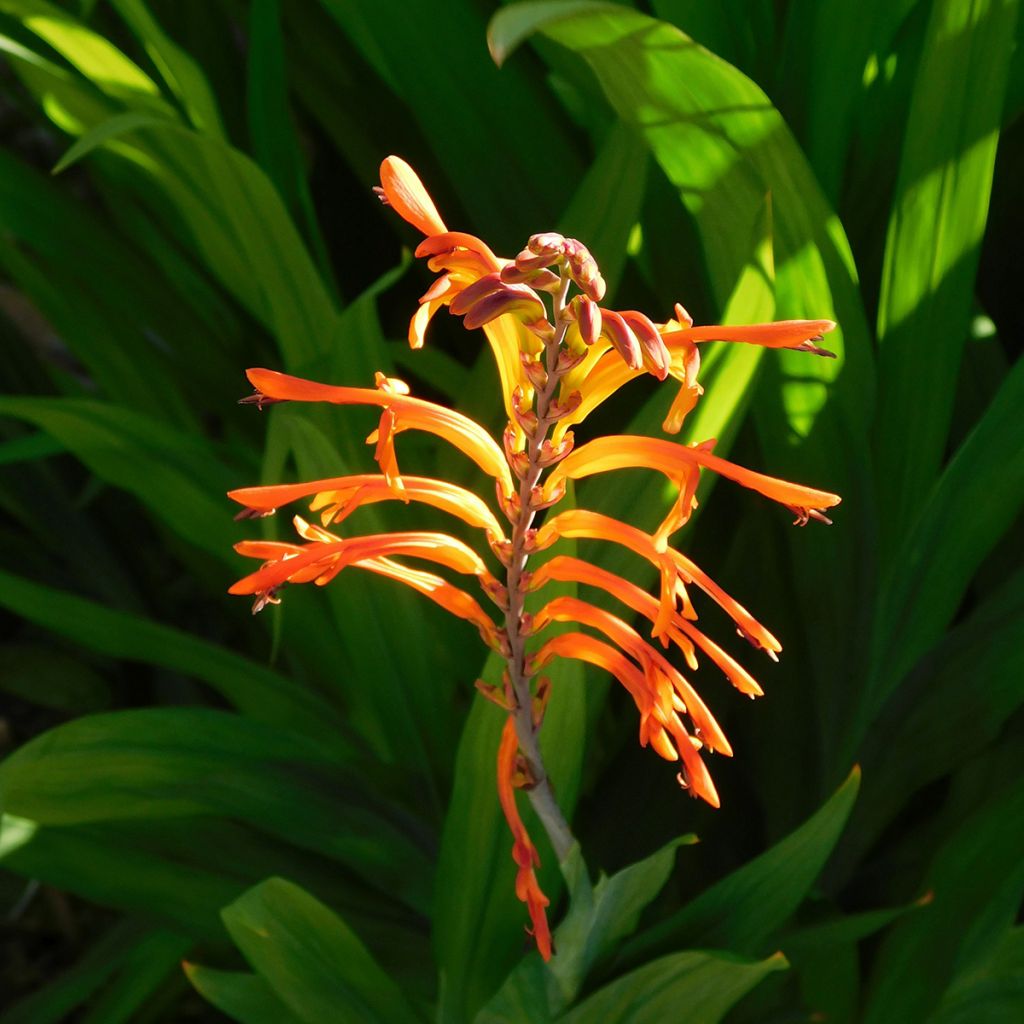

Chasmanthe floribunda Saturnus
Chasmanthe floribunda Saturnus
Chasmanthe floribunda Saturnus
African flag, Cobra lily
This item cannot be shipped to the selected country
Delivery charge from €5.90
More information
Delivery charge from €5.90
More information
Schedule delivery date,
and select date in basket
This plant carries a 6 months recovery warranty
More information
We guarantee the quality of our plants for a full growing cycle, and will replace at our expense any plant that fails to recover under normal climatic and planting conditions.
From €5.90 for pickup delivery and €6.90 for home delivery
Express home delivery from €8.90.
Does this plant fit my garden?
Set up your Plantfit profile →
Description
Chasmanthe floribunda 'Saturnus' is an unusual South African corm plant with autumnal and winter growth, featuring early spring flowering in fiery tones of red and orange. It is sensitive to frost. Resembling crocosmias in its overall appearance, this plant forms a beautiful dense and upright clump. In early spring, purple floral stems emerge from the foliage. They are adorned with long flamboyant tubular flowers, blending orange and bright red, resembling small flags. Well adapted to Mediterranean-type climates, it can be grown outdoors in very mild climates. Elsewhere, it can be used to create beautiful potted displays that are protected from frost in winter. Alternatively, corms can be planted in spring and dug up before the first frost. The plant will then bloom in summer.
Chasmanthe floribunda, also known as African Flag, belongs to the Iridaceae family. This botanical species is native to the Cape region in South Africa. It is a perennial herbaceous plant with an underground storage organ called a corm. This corm perishes below -5°C (23°F) and the foliage is destroyed as soon as it freezes. In nature, its growth emerges in late autumn, taking the form of a clump of stiff, upright, linear leaves in a vibrant light green. The 'Saturnus' cultivar features bicolour orange and red flowers and plicate leaves. Flowering occurs in March-April for 3 to 4 weeks, then the foliage dries up in late spring or early summer. The plant then enters dormancy in dry soil to escape the heat and summer drought. Flowering can reach about 1m (3ft) in height and 40cm (16in) in width, with leaves measuring 30 to 45cm (12 to 18in) long. The flattened, purplish flower spikes bear numerous finely tubular flowers, 8cm (3in) long, in a vibrant orange tinged with red, arranged in zigzags along two ranks. Each flower has a long upper petal that releases long purple stamens. After pollination by insects, capsules containing seeds are formed, which can spontaneously self-seed under favourable conditions.
Chasmanthes make a great substitution for crocosmias in frost-free warm gardens where they require little maintenance. Elsewhere, they can be used to create beautiful potted displays from spring onwards. Easy to grow in containers, vigorous but demanding, they can be planted in semi-shade or full sun, in groups of 10 corms, in light, fertile soil that remains moist throughout their growth period. Their warm-toned flowers create splendid combinations with annuals (love-in-a-mist and poppies) and fit well in exotic settings, with agapanthus taking over in summer. They always make successful combinations with garden irises, grasses, and grey foliage.
Chasmanthe floribunda Saturnus in pictures
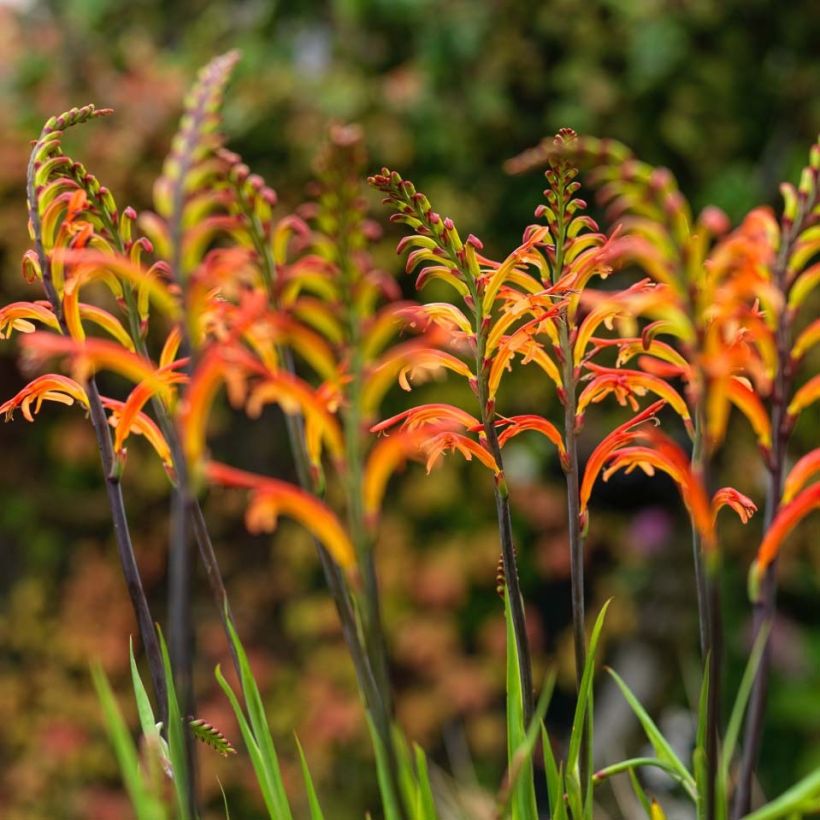

Plant habit
Flowering
Foliage
Botanical data
Chasmanthe
floribunda
Saturnus
Iridaceae
African flag, Cobra lily
Cultivar or hybrid
Other Chasmanthes
Planting and care
Chasmanthe floribunda 'Saturnus' can be grown in open ground in warm regions spared from heavy frosts, mainly on the coast. In this situation, plant it in early autumn. The corm is destroyed at -5°C (23°F) and the foliage, which develops in autumn and winter, will be destroyed as soon as it freezes. Elsewhere, it should be planted in spring in a large pot, which allows it to be protected from frost in winter. Alternatively, it can be grown like a gladiolus, that is to say, planted after the last frost and the corms dug up in autumn, to be stored in a dry and cool place. It will then bloom in summer.
Plant the corms at a depth of 8 to 9cm (3 to 4in). The growing medium should be light, well-drained and rich, and remain slightly moist throughout the growth and flowering period (from November-December until the end of May, when the foliage starts to turn yellow). On the other hand, the plant should be kept dry after flowering, which corresponds to its dormant period. Opt for a good quality potting soil mixed with a little sand. Overwinter your potted plant in a bright, cool, but frost-free place.
Planting period
Intended location
Care
-
, onOrder confirmed
Reply from on Promesse de fleurs
Haven't found what you were looking for?
Hardiness is the lowest winter temperature a plant can endure without suffering serious damage or even dying. However, hardiness is affected by location (a sheltered area, such as a patio), protection (winter cover) and soil type (hardiness is improved by well-drained soil).

Photo Sharing Terms & Conditions
In order to encourage gardeners to interact and share their experiences, Promesse de fleurs offers various media enabling content to be uploaded onto its Site - in particular via the ‘Photo sharing’ module.
The User agrees to refrain from:
- Posting any content that is illegal, prejudicial, insulting, racist, inciteful to hatred, revisionist, contrary to public decency, that infringes on privacy or on the privacy rights of third parties, in particular the publicity rights of persons and goods, intellectual property rights, or the right to privacy.
- Submitting content on behalf of a third party;
- Impersonate the identity of a third party and/or publish any personal information about a third party;
In general, the User undertakes to refrain from any unethical behaviour.
All Content (in particular text, comments, files, images, photos, videos, creative works, etc.), which may be subject to property or intellectual property rights, image or other private rights, shall remain the property of the User, subject to the limited rights granted by the terms of the licence granted by Promesse de fleurs as stated below. Users are at liberty to publish or not to publish such Content on the Site, notably via the ‘Photo Sharing’ facility, and accept that this Content shall be made public and freely accessible, notably on the Internet.
Users further acknowledge, undertake to have ,and guarantee that they hold all necessary rights and permissions to publish such material on the Site, in particular with regard to the legislation in force pertaining to any privacy, property, intellectual property, image, or contractual rights, or rights of any other nature. By publishing such Content on the Site, Users acknowledge accepting full liability as publishers of the Content within the meaning of the law, and grant Promesse de fleurs, free of charge, an inclusive, worldwide licence for the said Content for the entire duration of its publication, including all reproduction, representation, up/downloading, displaying, performing, transmission, and storage rights.
Users also grant permission for their name to be linked to the Content and accept that this link may not always be made available.
By engaging in posting material, Users consent to their Content becoming automatically accessible on the Internet, in particular on other sites and/or blogs and/or web pages of the Promesse de fleurs site, including in particular social pages and the Promesse de fleurs catalogue.
Users may secure the removal of entrusted content free of charge by issuing a simple request via our contact form.

































